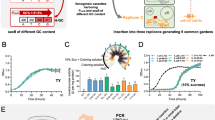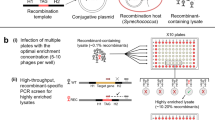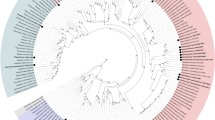Abstract
Background:
Transposable elements are widely distributed in archaea, bacteria and eukarya domains. Considerable discrepancies of transposable elements in eukaryotes have been reported; however, the studies focusing on the diversity of transposable systems in prokaryotes were scarce. Understanding the transposable element system in cyanobacteria by the genome-wide analysis will greatly improve the knowledge of cyanobacterial diversity.
Results:
In this study, the transposable elements of seventeen cyanobacterial genomes were analyzed. The abundance of insertion sequence (IS) elements differs significantly among the cyanobacterial genomes examined. In particular, water bloom forming Microcystis aeruginosa NIES843 was shown to have the highest abundance of IS elements reaching 10.95% of the genome. IS family is a widely acceptable IS classification unit, and IS subfamily, based on probe sequences, was firstly proposed as the basic classification unit for IS element system. Both of IS family and IS subfamily were set as the two hierarchical units for evaluating the IS element system diversity. Totally, 1982 predicted IS elements, within 21 IS families and 133 subfamilies were identified in the examined cyanobacterial genomes. Families IS4, IS5, IS630 and IS200-605 are widely distributed, and therefore supposed to be the ancestral IS families. Analysis on the intactness of IS elements showed that the percentage of the intact IS differs largely among these cyanobacterial strains. Higher percentage of the intact IS detected in the two hot spring cyanobacterial strains implied that the intactness of IS elements may be related to the genomic stabilization of cyanobacteria inhabiting in the extreme environments. The frequencies between IS elements and miniature inverted-repeat transposable elements (MITEs) were shown to have a linear positive correlation.
Conclusions:
The transposable element system in cyanobacterial genomes is of hypervariabilty. With characterization of easy definition and stability, IS subfamily is considered as a reliable classification unit in IS element system. The abundance of intact IS, the composition of IS families and subfamilies, the sequence diversity of IS element nucleotide and transposase amino acid are informative and suitable as the indicators for studies on cyanobacterial diversity. Practically, the transposable system may provide us a new perspective to realize the diversity and evolution of populations of water bloom forming cyanobacterial species.
Similar content being viewed by others
Article PDF
Author information
Authors and Affiliations
Corresponding author
Rights and permissions
About this article
Cite this article
Lin, S., Haas, S., Zemojtel, T. et al. Genome-wide comparison of cyanobacterial transposable elements, potential genetic diversity indicators. Nat Prec (2010). https://doi.org/10.1038/npre.2010.4923.1
Received:
Accepted:
Published:
DOI: https://doi.org/10.1038/npre.2010.4923.1



